Top 10 Most Beautiful Historical Sites in Cheshire
Cheshire is a county in England. This place is an ideal tourist destination for tourists. Cheshire awaits you. Don't miss the historical sites, cultural ... read more...museums, and ravishing sights during your journeys. Let's find out with Toplist the most beautiful historical sites in Cheshire!
-
The first position on the list of the most beautiful historical sites in Cheshire is Chester Cathedral. It is the mother church of the Diocese of Chester. It is situated in the English county of Cheshire city of Chester. Christ and the Blessed Virgin Mary are honored at the cathedral, which was previously the abbey church of a Benedictine monastery dedicated to Saint Werburgh. It has been the Bishop of Chester's residence since 1541.
The former monastery structures to the north of the cathedral, which is a Grade I listed structure, are also a component of the same heritage complex. Although the site itself may have been used for Christian worship since Roman times, the cathedral's architecture dates from between the 10th century and the early 16th century, having been altered several times over history, a typical feature of English cathedrals. The current structure exhibits elements of every significant English medieval architectural style, from the Norman to the Perpendicular.
A free-standing bell tower was later built to the cathedral and previous monastic buildings in the 20th century after considerable restoration work that took place during the 19th century (and some disputes). The cathedral hosts concerts and exhibitions, and the structures in Chester serve as a major tourist draw in addition to hosting Christian worship services.
Location: St Werburgh Street, Chester, Cheshire
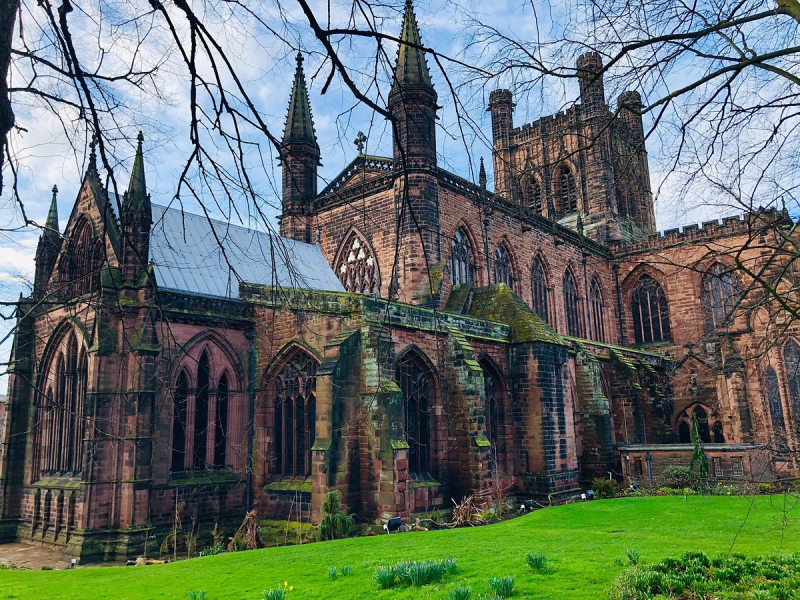
Photo: tripadvisor.com.vn 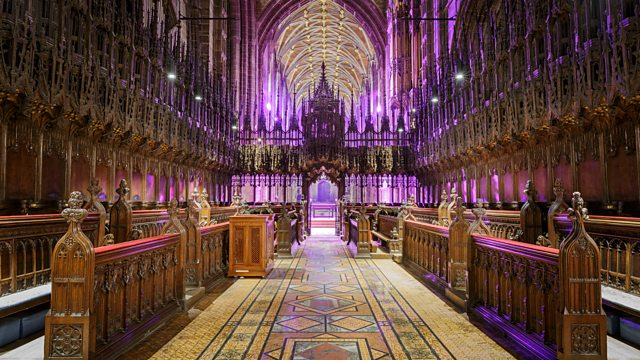
Photo: bbc.co.uk -
Following land purchases after the Black Death in 1348 and the collapse of the Monasteries under Henry VIII, the Moreton family accumulated their wealth. Little Moreton Hall was built with the intention of serving as a monument to their recent success. Around 1504–1508, work on this intriguing edifice began, and extensions were made up until 1610. The house is set on an island, surrounded by a 10-meter-wide moat, and has a Knot garden, which gained popularity in the late Tudor era.
The Moretons' inherited wealth would not last. The house deteriorated following the English Civil War (1642–1651). The fact that the family supported the royalist cause did not benefit them after Cromwell's victory. The Moreton family abandoned the home around the beginning of the 18th century, and tenant farmers began to rent the property's surroundings and the structure itself.
The structure was owned by the family up until 1938, when Bishop C. W. R. Abraham and his son, Mr. Rupert Abraham, donated it to the National Trust of the United Kingdom. Early in the 20th century, minor restoration efforts started; after the structure was purchased by the National Trust, more significant ones followed.
Location: Newcastle Rd, Congleton CW12 4SD, Cheshire, England
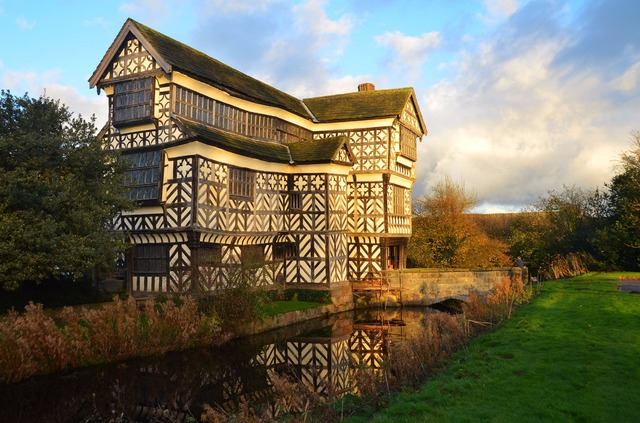
Photo: geni.com Video: https://www.youtube.com/watch?v=E72jxVVz5Ak -
One of the most historical sites in Cheshire is Walton Hall. Formerly held by Lord Field and the entertainer Danny La Rue, Walton Hall is a 16th-century country home in Walton, close to Wellesbourne, Warwickshire. It is currently a hotel that is a part of Accor Hotels. It is a listed structure of Grade II*. The Lestrange family has possessed the Manor of Walton since the fifteenth century. Walton heiress Barbara Lestrange wed Robert Mordaunt in 1541. In 1611, Lestrange Mordaunt became the first baronet of Mordaunt.
Sir George Gilbert Scott was hired by Sir Charles Mordaunt, 10th Baronet, to create a new Gothic Revival mansion house in 1858. Although the current Walton Hall was built in the middle of the 19th century, its cellars were originally built during the reign of Elizabeth I. The Victorian manor house where guests stay today and the chapel where wedding blessings take place were both erected by Sir Charles Mordaunt. After being finished in 1862, the home gained notoriety as a result of a divorce scandal involving Sir Charles and his wife Harriet a few years later.
The Ministry of Defence controlled the main property, which was used as an Army cadet training camp in the middle of the 20th century. The remainder of the estate served as a ladies' boarding school from 1963 to 1969.
Location: Walton Lea Rd, Higher Walton, Warrington WA4 6SN, Cheshire, England
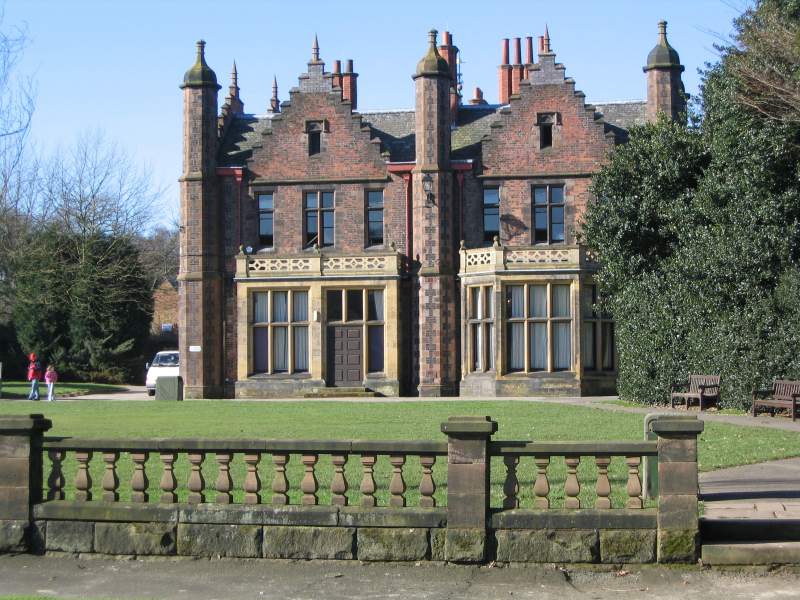
Photo: wikipedia 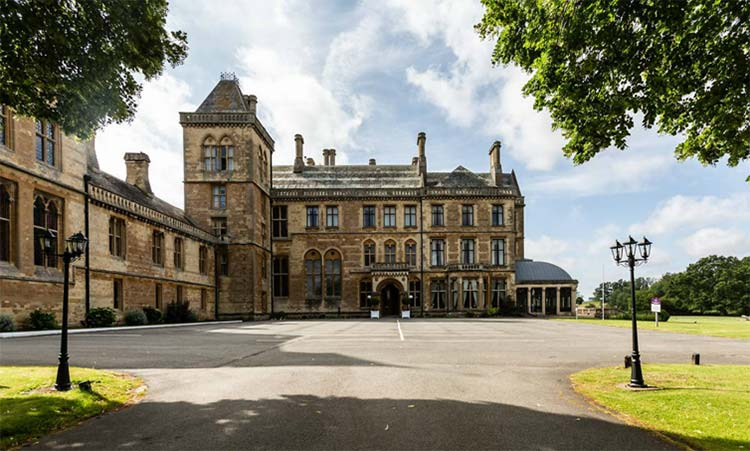
Photo: theweddingsecret.co.uk -
The 8,000-seat Cirencester Roman Amphitheatre was built from the first century to the second century. Cirencester Roman Amphitheatre would have drawn visitors from all over Roman Britain to its performances, which probably featured gladiatorial combat and exotic animal presentations. It is located in the important Roman city of Corinium, which is now known as Cirencester.
With a population of about 10,000, Corinium was the second-largest city in Roman Britain after Londinium (London). However, the once-thriving population quickly collapsed once the Romans left Britain in the fifth century. Without troops' salaries to support the local economy and without private donors to support amphitheatre public games, it quickly ceased to be a popular gathering place.English Heritage currently oversees the Cirencester Roman Amphitheatre, which is accessible to the general public.
The former theatre's huge earthworks are still visible, providing an idea of its size—it was one of the largest in Britain—despite the fact that very little of its original building is still there.It is oval shaped, with entrances on either end and previously had substantial banks supporting wooden benches atop drystone walls. One of the entrances was later altered to create two small apartments, one of which may have served as a shrine to Nemesis, as was typical of Roman amphitheatres like Chester Roman Amphitheatre.
Location: 1xw, 30 Cotswold Ave, Cirencester GL7 1XW, England
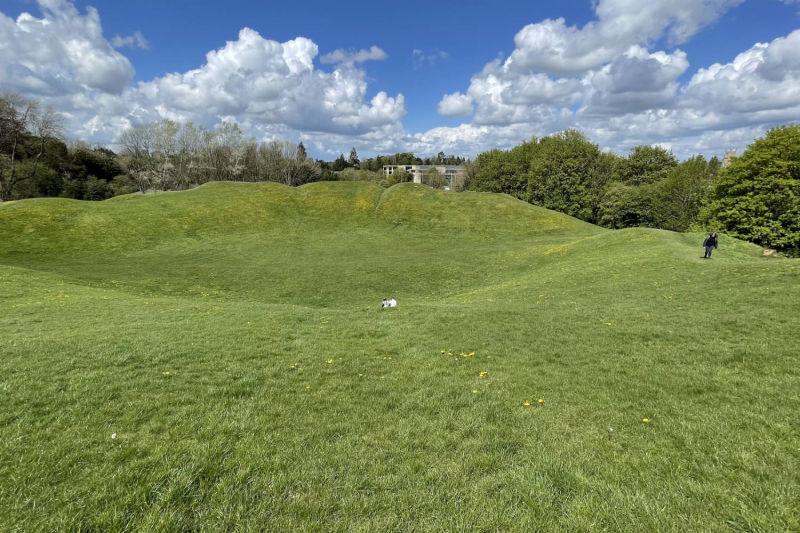
Photo: cotswolds.org 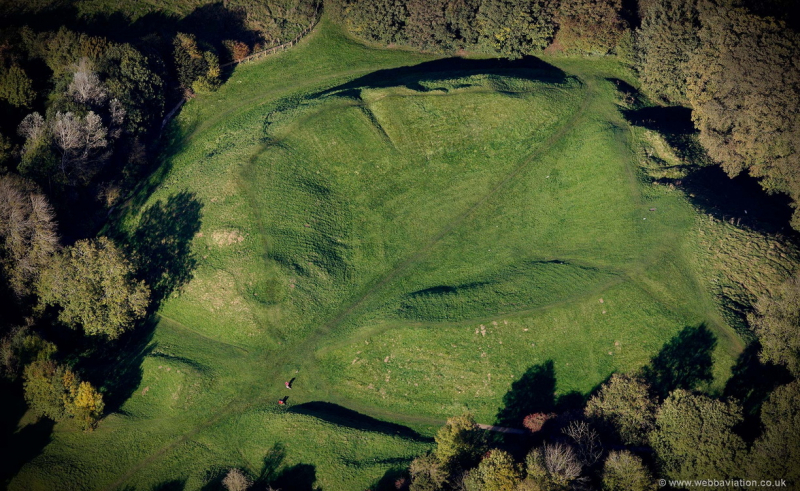
Photo: webbaviation.co.uk -
In Edgar's Field, Handbridge, Chester, England, there is a shrine dedicated to the Roman goddess Minerva called Minerva's Shrine. It is registered as a Grade I listed building on England's National Heritage List. The shrine, which is carved into the side of a sandstone quarry, is from the early second century. It is the only monument of its kind that is still standing in Western Europe. A 19th-century stone enclosure with a hood that was updated in the late 20th century serves as its guardian. The carving has been harmed by human intervention as well as the passage of time.
The shrine is located next to the former main Roman road that led from the south towards the Deva castle. The Roman goddess of combat, learning, and craftsmanship was known as Minerva. She is frequently portrayed wearing her armor, including a helmet, shield, breastplate, and spear, however, in this picture, she is represented standing in a mock temple. The Roman quarry is one of three Scheduled Monuments, along with Edgar's Field and the statue of Minerva. The Grosvenor Museum in Chester houses a cast of the shrine. Minerva’s Shrine is one of the most historical sites in Cheshire.
Location: Edgar Pl, Handbridge, Chester CH4 7JY, England
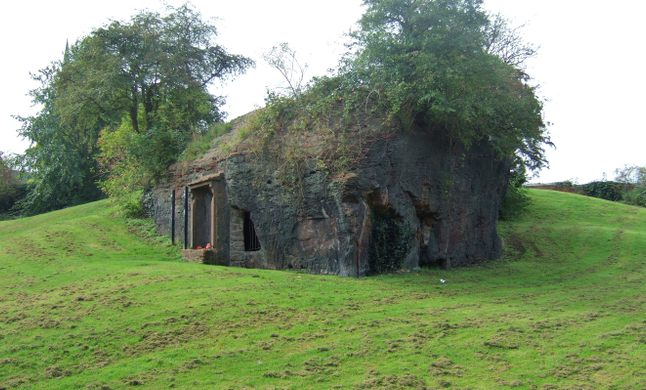
Photo: atlasobscura.com 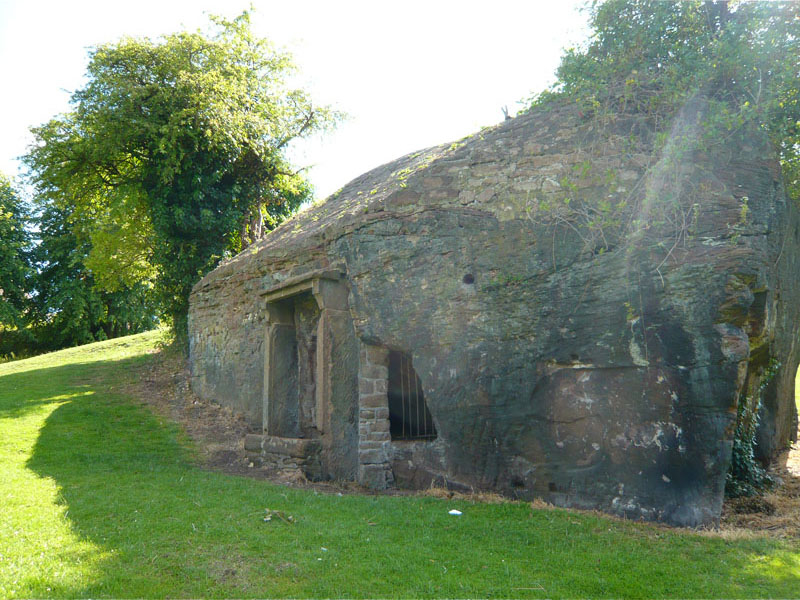
Photo: doatrip.de -
One of the best remaining fortifications from the Industrial Revolution is Quarry Bank Mill, which is located in Styal, England, not far from Manchester. Samuel Greg, a wealthy and seasoned businessman, founded Quarry Bank Mill, which quickly gained notoriety for its technological advancements and approach to labor relations. The National Trust now manages the mill, which serves as a museum for the history of the English industry. The building on the property is categorized as a Grade II structure and is considered to be of "outstanding national and international value" by the EU.
Samuel Greg leased the site on which the Quarry Bank cotton mill was built in 1784 because he wished to preserve the nearby forest. The location was ideal for a functioning mill: it was close to Liverpool via the Bridgewater Canal and the River Bollin. The Gregs, made up of Samuel and his wife Hannah Lightbody, was forward-thinking and benevolent businessmen. In addition to constructing Styal Estate, which served as the workers' home, they also offered medical care and educational opportunities for the children of the workers. In the 1820s, dwellings grew alongside the mill's expansion.
The Quarry Bank Mill now has the strongest operational waterwheel in Europe. The wheel, which was made of iron and was relocated from Glasshouses Mill, was created by Sir William Fairbairn, an apprentice of renowned textile producer and engineer Thomas Hewes. Visitors visiting the mill, however, will be able to witness the complete transition from water power to steam and back to water power.
Location: Styal Rd, Styal, Wilmslow SK9 4HP, England
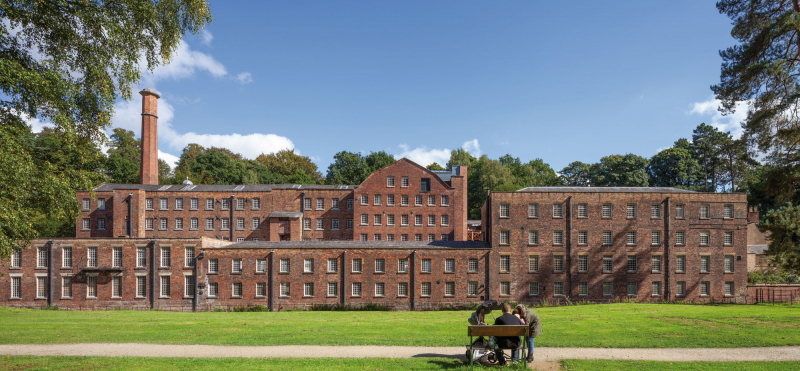
Photo: buttress.net 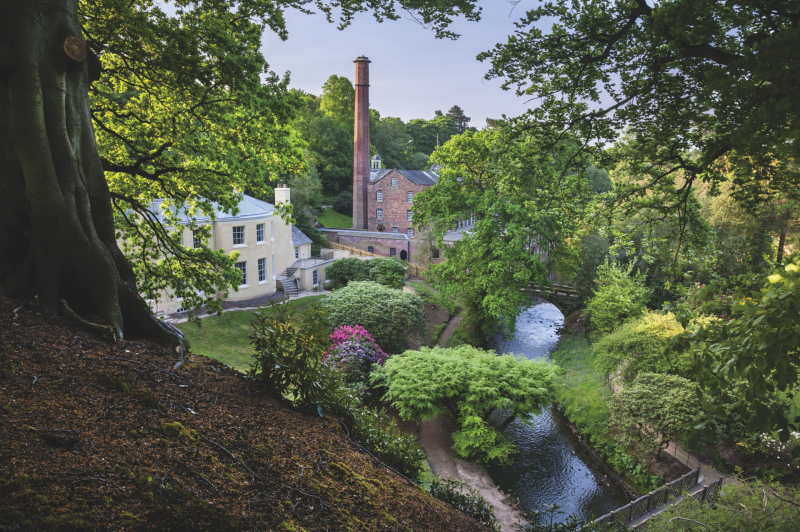
Photo: bigissuenorth.com -
On the location of the ancient entry to the Roman fortification of Deva Victrix in Chester, Cheshire, England, Eastgate is a constantly open gate through the Chester city walls. It is a well-known landmark in Chester, and the clock on top, the Eastgate clock, is reportedly the second-most photographed clock in England, behind Big Ben.
In the first century, a timber tower defended the gate. In the second century, a stone tower took its place, and this tower was likely replaced in the fourteenth century. The current entranceway, a three-arched sandstone building built in 1768, carries the walkway that is a section of Chester's city walls. A clock was installed on the top of the gateway in 1899 to commemorate Queen Victoria's diamond jubilee two years earlier. It is supported by openwork iron pylons, features a copper ogee cupola, and clock faces on each of its four sides. John Douglas, a Chester architect, created the clock. On July 28, 1955, the entire building including the doorway and clock became a Grade I listed building.
The red sandstone Eastgate has a small pedestrian arch on each side and a large central arch with rusticated jambs and voussoirs. The county palatine's arms, a sword of justice, and three sheaves are displayed on the inner keystone. Crossing the top of Eastgate, which is topped by the Victorian clock, is a walkway that is a part of the city walls' circle.
Location: 41-45 Eastgate St, Chester CH1 1LE, England
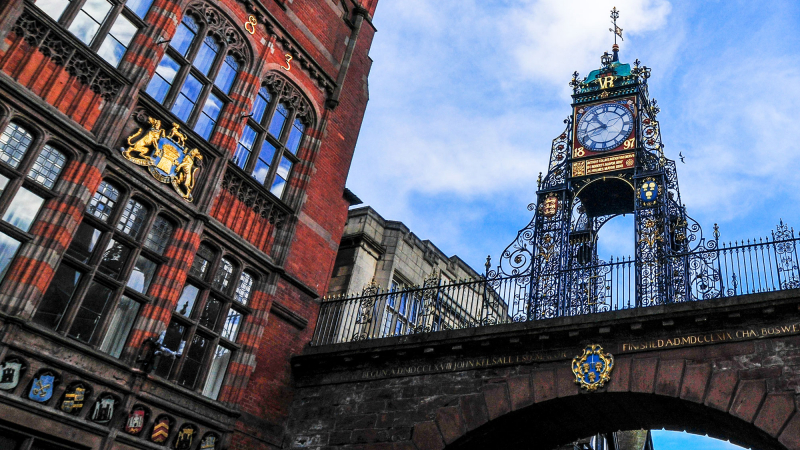
Photo: experencechester.co.uk 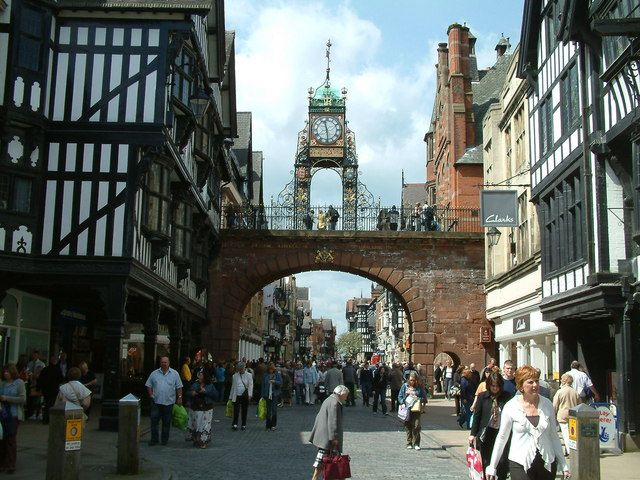
Photo:gpsmycity.com -
One of Cheshire's undiscovered beauties is Norton Priory Museum & Gardens, which is located on the outskirts of Runcorn. This is the most explored monastery site in all of Europe and was formerly the site of a medieval church.
Visitors can visit the priory remains, which depict the layout of the medieval structures, and the undercroft from the 12th century, which has a lovely vaulted ceiling. Founded in 1134, Norton Priory became a mitered abbey in 1391. The Dutton family and the Brooke family are two significant families with connections to the website. Up until the Dissolution in 1536, the Dutton family actively participated in and sponsored Norton Priory as a monastic center. Between 1545 and 1921, the Brooke family lived in Norton Priory before relocating to a new residence in Worcestershire.
Numerous thousand artifacts found on the property are on exhibit at the museum, which chronicles the 900 year history of the area, from priory to mansion house, as well as the lives of those who lived here. The St. Christopher statue is the museum's most stunning item. This statue was probably commissioned to commemorate the location becoming an abbey in 1391. More recently, the monument is shown in the 1954 children's classic "The Children of Green Knowe" by Lucy M. Boston.
Location: Tudor Rd, Windmill Hill, Runcorn WA7 1SX, England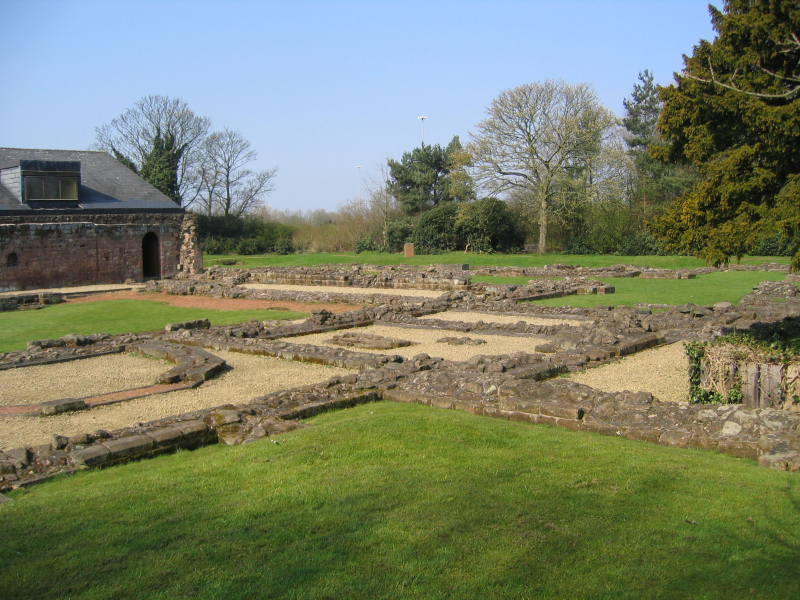
Photo: wikipedia 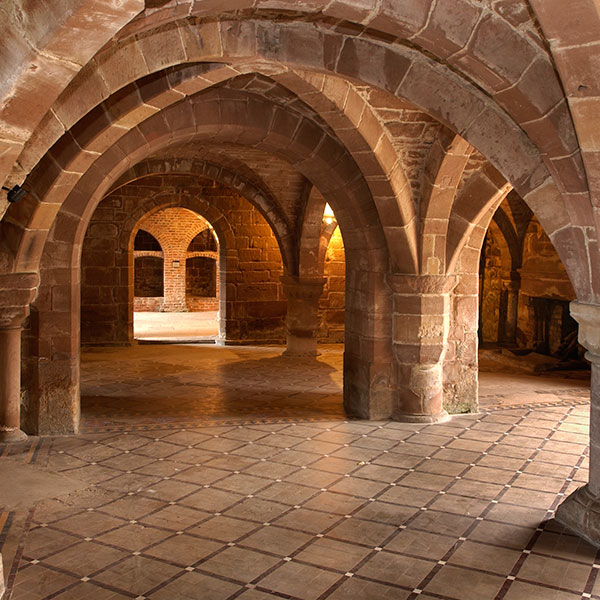
Photo: nortonpriory.org -
With the former location of the ancient citadel of Deva, Chester Roman Gardens has one of the most well-known Roman histories in all of Britain. Deva was initially constructed by the Romans around 70 AD when they moved north against the local Brigante tribe, and it was twice reconstructed over the ensuing 200 years. Deva was abandoned when the Romans left Britain in the late 4th or early 5th century, but the civilian community that had grown up around the fort persisted and eventually became the city of Chester.
Chester Roman Gardens, first constructed in 1949 by Charles Greenwood and Graham Webster, were intended to display a variety of artifacts from the city's Roman heritage in a public environment. The majority of the artifacts are from 19th-century excavations in the city and are currently on display with pieces from some of Deva's most significant structures, including its baths and legionary headquarters.
The Gardens had a makeover effort in 2000, adding information boards and providing access to the river to further enhance the visiting experience. Today, Chester Roman Gardens offer a peaceful retreat amidst the bustle of the city's streets where visitors can explore the Roman ruins. Columns from the Roman gymnasium and carved fascias from the Roman stronghold of Deva Victrix are only two of the many Roman relics found in the Gardens.Location: Pepper St, Chester CH1 1DQ, England
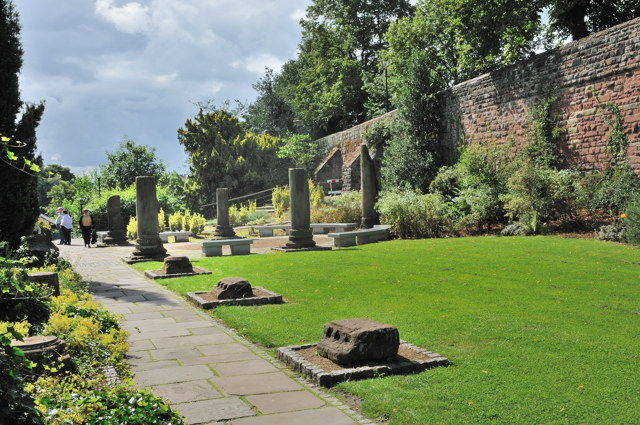
Photo: visit-chester.co.uk 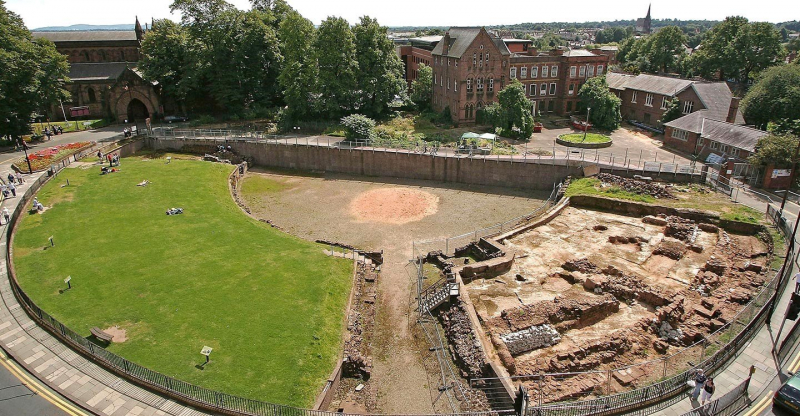
Photo: english-heritage.co.uk -
The next position on the list of the most beautiful historical sites in Cheshire is Beeston Castle. It is located 350 feet (107 meters) above the Cheshire Plain near Beeston, Cheshire, England. Ranulf de Blondeville, the 6th Earl of Chester (1170–1232), constructed it after his return from the Crusades in the 1220s. Henry III acquired ownership of Beeston in 1237, and he maintained it in good condition until the 16th century, when it was deemed no longer useful for military purposes. However, in 1643, during the English Civil War, Beeston was once more put to use. According to Cromwell's command to destroy the castle, it was lit on fire in 1646 to stop it from being used as a stronghold in the future. A portion of the location was used as a quarry throughout the 18th century.
English Heritage is the owner and manager of the castle, which is a Scheduled Ancient Monument. The gatehouse and curtain walls of the inner bailey are classified individually in the National Heritage List for England as Grade I listed buildings, as are the walls of the outer bailey. According to a tale, Richard II's royal treasure was allegedly hidden on the castle grounds, but numerous searches have turned up nothing.
Location: Beeston, Cheshire, EnglandVideo: https://www.youtube.com/watch?v=pH6ImrRC528 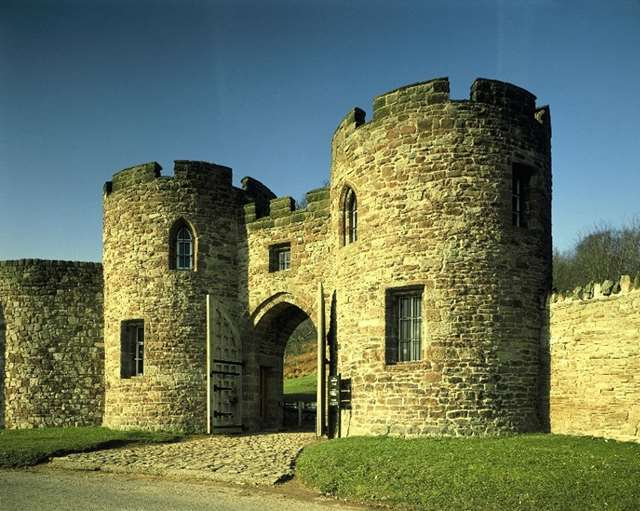
Photo: english-heritage.co.uk































